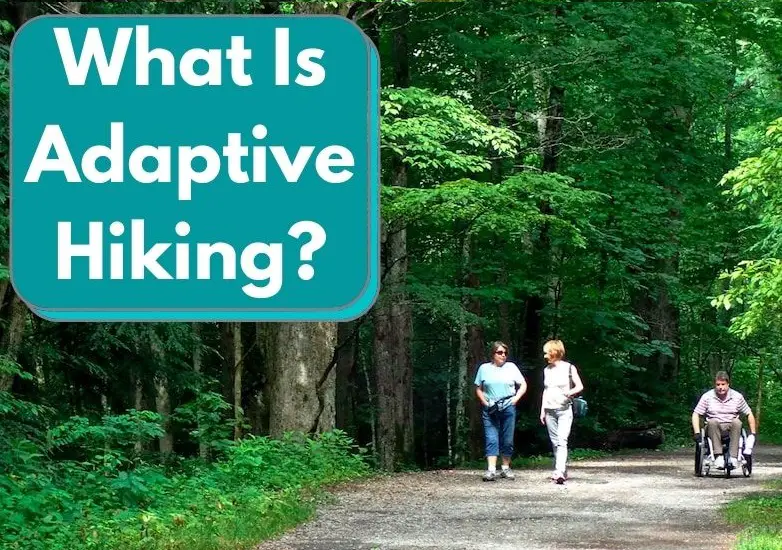Perhaps you’ve heard the term “adaptive hiking” before and were left scratching your head.
If that’s the case, great news! We’re here to explain exactly what adaptive hiking is, and how you can get started.
Adaptive hiking involves people with disabilities accessing park or mountain trails using assistive technology or other personal supports.
We’ll dive into the benefits of adaptive hiking and how to get started in this guide.
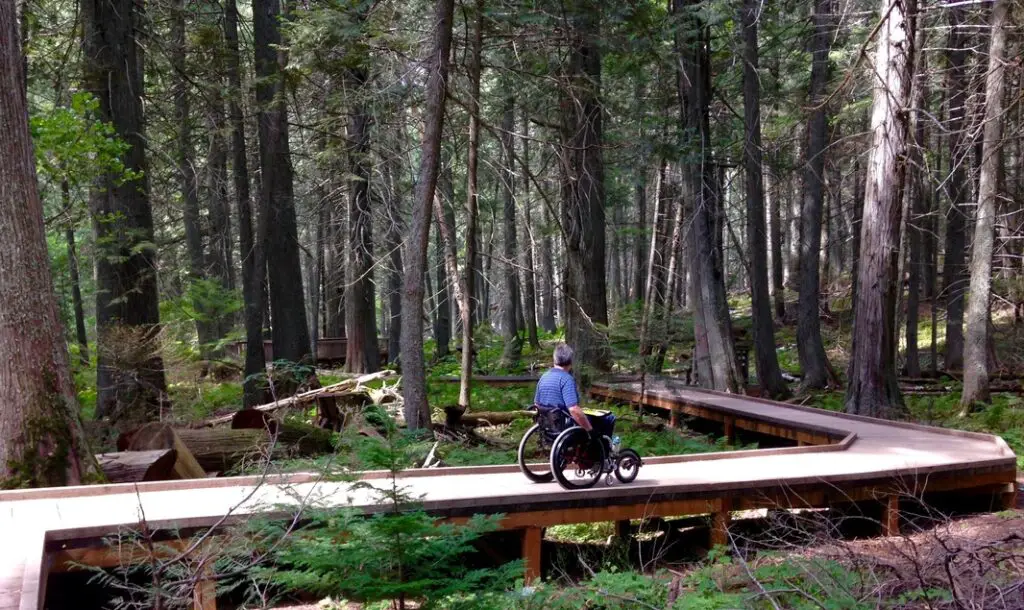
All About Adaptive Hiking
Hiking and spending time outdoors has been shown through research to lower blood pressure, increase serotonin, and can spark creativity.
In addition, hiking and other outdoor activities have been shown to improve the physical, emotional, mental, and spiritual aspects of people’s lives.
Benefits of hiking outdoors last much longer than just the time someone spends on a trail.
Considering all the advantages of being outdoors, adaptive hiking was designed to make hiking more accessible to disabled people.
Personal supports can include using a guide for people with vision issues or cognitive disabilities, while folks with physical limitations can use specialized hiking chairs or other equipment.
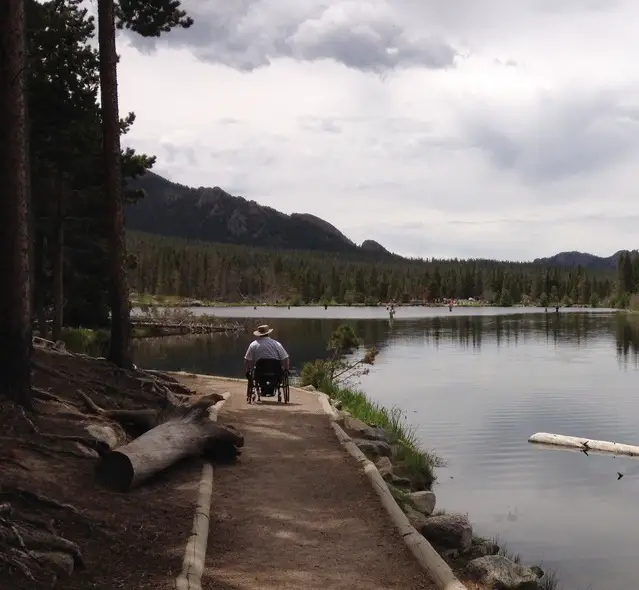
Adaptive Hiking Trails And Resources
Online communities and resources have popped up to better support the adaptive hiking movement in recent years.
What Are Adaptive Hiking Trails?
Adaptive hiking trails are any hiking trails that have characteristics that allow individuals with a physical disability to enjoy hiking on them.
These characteristics relate to the surface firmness, obstacles, grade, and cross slope of the trails.
Adaptive hiking trails may consist of natural-surface paths, greenways, paved paths, or any other wheelchair accessible trail.
Adaptive Hiking Online Resources
There are several adaptive hiking resources online to check out. Here are a few we recommend:
AccessibleNature.info
AccessibleNature.info is an organization of accessible hiking trails, guided tours and adventures, and even accessible camping, hunting, and fishing areas.
Traillink.com
Traillink.com allows you to easily search for accessible trails by your city, State, or zip code, and also features an app where you can download offline maps, and a community where you can talk with other adaptive hikers.
Trail Access Project
The Trail Access Project is a non-profit that helps remove the barriers of recreational trail use by providing info about trails that are good for adaptive hiking, increasing the number of accessible features, and help support park managers’ development of accessibility.
Beyond The Pavement Facebook Group
The Beyond The Pavement Facebook Group is a place for members of the adaptive community to talk about the “Beyond the Pavement” lifestyle, share content, highlight hardworking groups and organizations, plan events, ask for support, and get answers about adaptive mobility equipment.
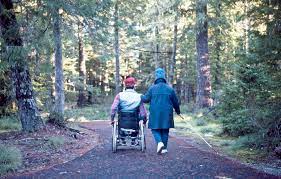
Adaptive Hiking Equipment
There are many types of adaptive hiking equipment available, and the one that is best is highly dependent on the individual’s needs and abilities.
Companies like Motion Concepts, GRIT, and Action Trackchair make special wheelchairs that are designed for use on uneven and unpaved surfaces such as hiking trails.
There are also alternative wheelchairs that use handles for self-propulsion, like the Renegade Wheelchair.
Additionally, there are attachments like the FreeWheel that will allow an existing wheelchair to better tackle hiking trails and other terrain types.
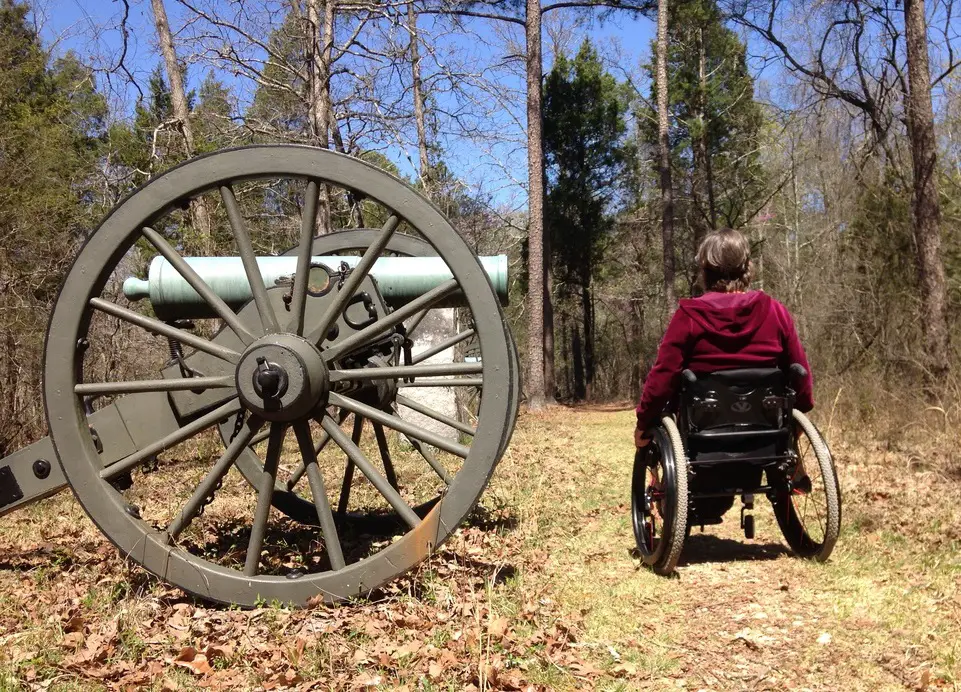
How To Plan For Your Next Adaptive Hiking Adventure
If you’re ready to take the plunge into adaptive hiking, it’s best to prepare and plan your hike to make sure it’s a success.
Let’s walk through what you should expect and what to pay attention to when preparing for your hike.
Stock Up On Supplies And Gear
Bringing a pack with the right gear goes a long way into the enjoyability of your outing.
Be sure to bring a phone, hiking trail map, water, snacks, a first-aid kit, hiking knife, and a whistle with you.
If you’ll be hiking where there’s confirmed wildlife activity, bringing bear spray or other animal repellent is highly advised.
Share Your Plans With Others
Let your family or friends know where you’ll be hiking, along with your expected start and finish times.
This way, if you are not in contact with them in a reasonable time frame after your hike, they’ll know to call for help.
Make Sure You’re Well Informed
Be sure to research the hiking terrain and weather conditions before you head out for your hike.
Also, take a look at your equipment, inspect it to make sure everything’s in great shape, and be sure you know how to both operate and troubleshoot your gear in the event of a problem.
What Is Adaptive Hiking? Conclusion
In this guide, we covered what exactly adaptive hiking is, what equipment can be used, how to find adaptive hiking trails, and how to plan for your next adaptive hiking trip.
We hope you’ve found this article helpful, and please let us know of any other tips, tricks, resources, or suggestions in the comments below.
As always, enjoy the hike!

